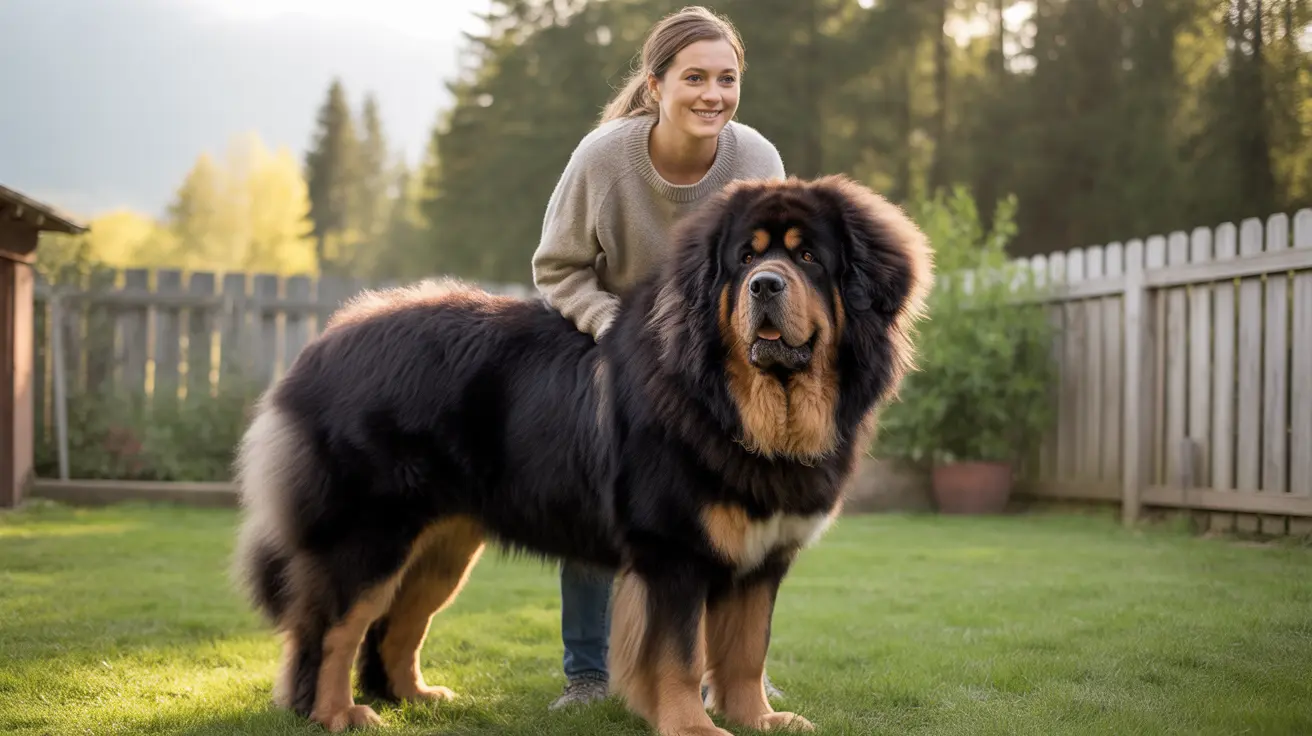Understanding Tibetan Mastiff Temperament
Tibetan Mastiffs were originally bred as guardian dogs in the harsh Himalayan region, where their primary role was protecting livestock and monasteries. This heritage has shaped their modern personality: they are naturally protective, independent, and intelligent rather than inherently aggressive.
These dogs typically display remarkable loyalty to their families while maintaining a reserved attitude toward strangers. This characteristic is often misinterpreted as aggression when it's actually a manifestation of their protective instincts.
Factors That Influence Aggressive Behavior
Early Socialization
Proper socialization during puppyhood is crucial for developing a well-adjusted Tibetan Mastiff. Dogs that lack exposure to different people, animals, and environments during their formative weeks are more likely to display fear-based or territorial aggression later in life.
Training and Leadership
Tibetan Mastiffs require confident, consistent handling from experienced owners. Their independent nature and intelligence demand a balanced approach to training that establishes clear boundaries without harsh methods. Poor training or lack of proper leadership can lead to behavioral issues.
Living with a Tibetan Mastiff
Space and Exercise Requirements
These dogs need ample space and regular exercise to prevent frustration-based behaviors. A securely fenced yard is essential, as their territorial instincts make off-leash activities risky. Apartment living is generally not suitable for this breed.
Family Integration
When properly trained and socialized, Tibetan Mastiffs can be gentle and affectionate family companions. However, supervision is necessary around children and visitors due to their protective nature and size.
Responsible Ownership
Successful Tibetan Mastiff ownership requires commitment to several key areas:
- Comprehensive early socialization
- Consistent training and boundary setting
- Regular exercise and mental stimulation
- Secure living environment
- Understanding of breed-specific traits
Frequently Asked Questions
Are Tibetan Mastiffs naturally aggressive or protective by nature?
Tibetan Mastiffs are naturally protective rather than aggressive. Their guardian instincts make them watchful and cautious, but well-socialized individuals typically only show aggression when they perceive a genuine threat to their family.
How can proper training and socialization reduce aggression in Tibetan Mastiffs?
Early and consistent socialization exposes these dogs to various situations, people, and animals, helping them develop appropriate responses. Proper training establishes clear boundaries and teaches them when protective behavior is warranted.
What behaviors indicate territorial aggression in a Tibetan Mastiff?
Signs include excessive barking at strangers, defensive posturing, rigid body language, and reluctance to allow people near their property or family. These behaviors can be managed through proper training and socialization.
Are Tibetan Mastiffs safe to have around children and other pets?
Well-socialized Tibetan Mastiffs can be safe with family children and pets they've grown up with. However, supervision is always necessary, and interactions with unfamiliar children or animals should be carefully managed.
What makes Tibetan Mastiffs unsuitable for inexperienced dog owners?
Their size, independence, strong guardian instincts, and need for consistent training make them challenging for novice owners. They require an experienced handler who understands their unique needs and can provide appropriate leadership.
Conclusion
While Tibetan Mastiffs possess strong protective instincts, they are not inherently aggressive dogs. Their behavior largely depends on proper training, socialization, and responsible ownership. For experienced dog owners who can provide the right environment and guidance, these magnificent animals can become loyal, gentle family guardians.






